Nasa calls time on silent Opportunity Mars rover
- Published
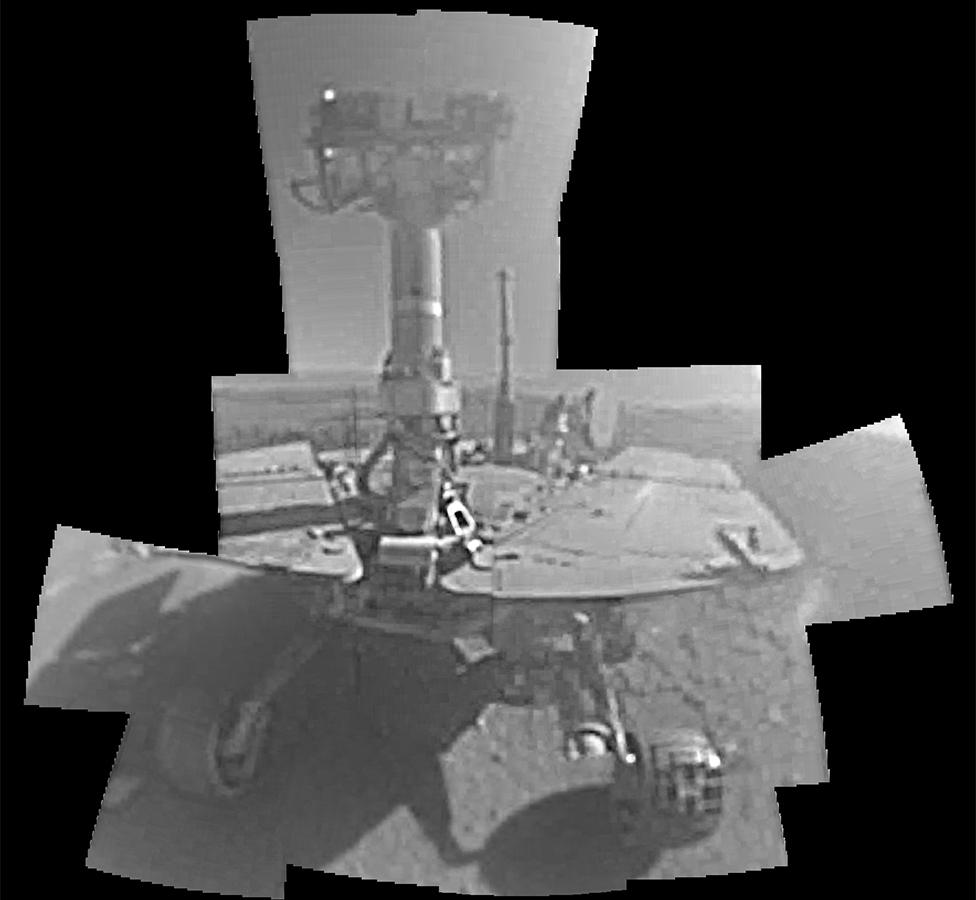
Oppy used one of its cameras to take this selfie on Mars

The US space agency (Nasa) has called time on its Opportunity Mars rover.
The six-wheeled robot last contacted Earth in June last year, just before it was enveloped in the darkness of a global dust storm.
Engineers hoped Oppy would power back up when the skies cleared and sunlight hit its solar panels again - but there has not been a peep out of the rover.
The routine prompt commands that have been sent to Opportunity will now end. The mission has been declared over.
"We tried valiantly over these last eight months to recover the rover, to get some signal from it," explained project manager John Callas.
"We've listened every single day with sensitive receivers, and we sent over 1,000 recovery commands. We heard nothing and the time has come to say goodbye."
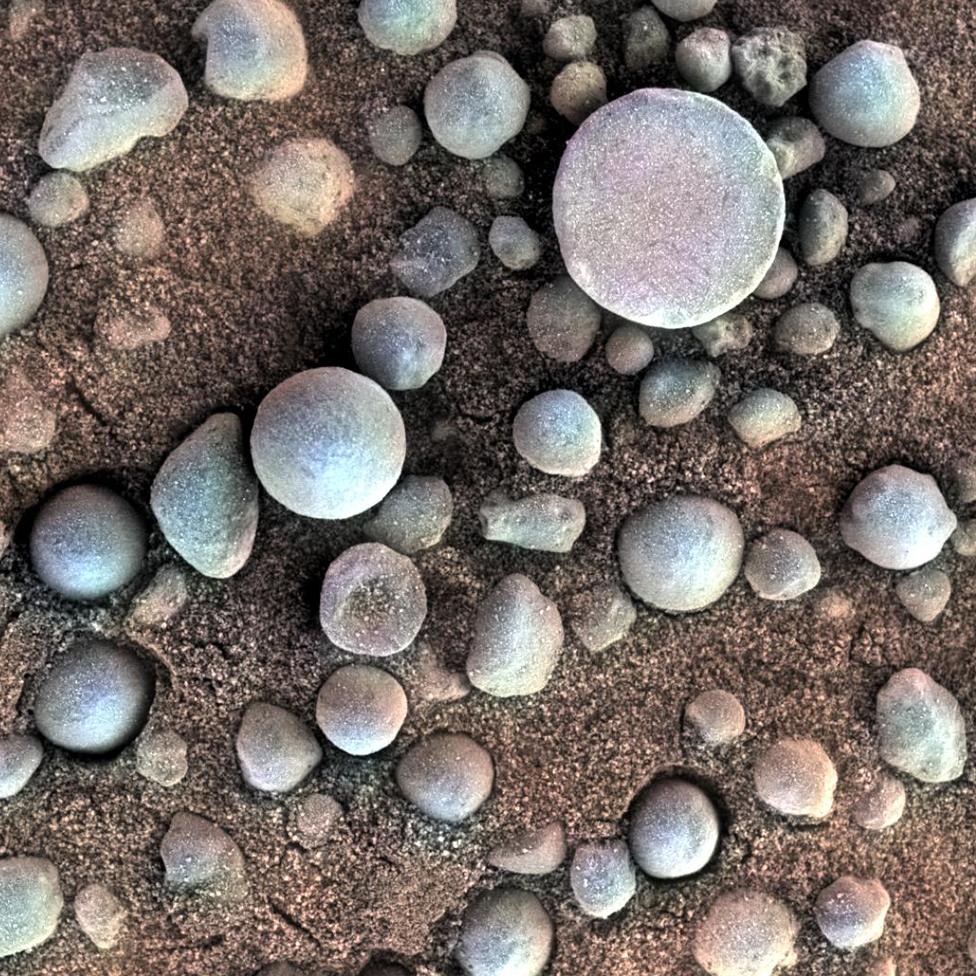
The "Blueberries" were among Opportunity's earliest discoveries
How big a deal is this?
The decision brings the curtain down on one of Nasa's most successful ever ventures.
"Oppy" and its twin robot, called Spirit, landed on Mars in January 2004 with the goal of investigating whether the planet ever had the conditions necessary to support life.
The mission team believed its "mobile geologists" would work for at least 90 Martian days and have the capability to travel up to 1km.
In the end, the golf-buggy-sized rovers surpassed all expectations.
Spirit worked for six years, logging a drive distance of almost 8km; and Opportunity trundled on for 45km over 14.5 years - a record for any wheeled vehicle off Earth.
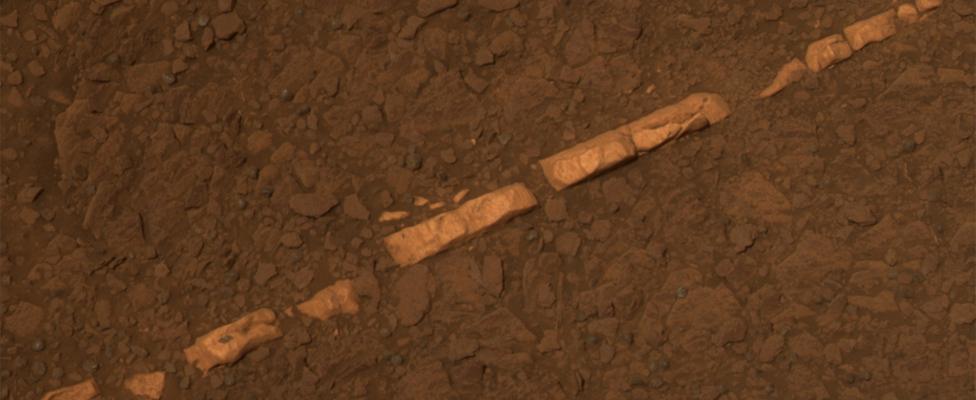
Gypsum: Later in the mission, Oppy saw rocks that were laid down in neutral water
What did the twin rovers achieve?
The science the rovers returned was hugely significant. They proved the planet in ancient times was very different to the freezing, desiccated world we see today.
It was warmer and wetter. Indeed, there was evidence in the rocks examined by the rovers' instruments that bodies of water would sit at, or just under, the surface for prolonged periods.
Oppy made this discovery almost as soon as it had landed in a small depression known as Eagle Crater.
Its cameras spied small spherules that were quickly dubbed "Blueberries" because of their shape and small size. These concretions contained a lot of hematite, an iron-rich mineral that forms (often) in the presence of water.
Scientists concluded this water would have been fairly acidic and therefore not that friendly to life, but then later in the mission, when it reached Endeavour Crater, it came across clay minerals and gypsum deposits - clear signs of water interactions under much more neutral, and hospitable, conditions.
"We were able at the rim of Endeavour Crater to find rocks that were probably the oldest observed by either one of the rovers; rocks that pre-dated even the formation of Endeavour Crater," said Steve Squyres, Opportunity's chief scientist from Cornell University.
"And those told a story of water coursing through the rocks but with a neutral pH - it was water you could drink. That was one of the mission's most significant discoveries."
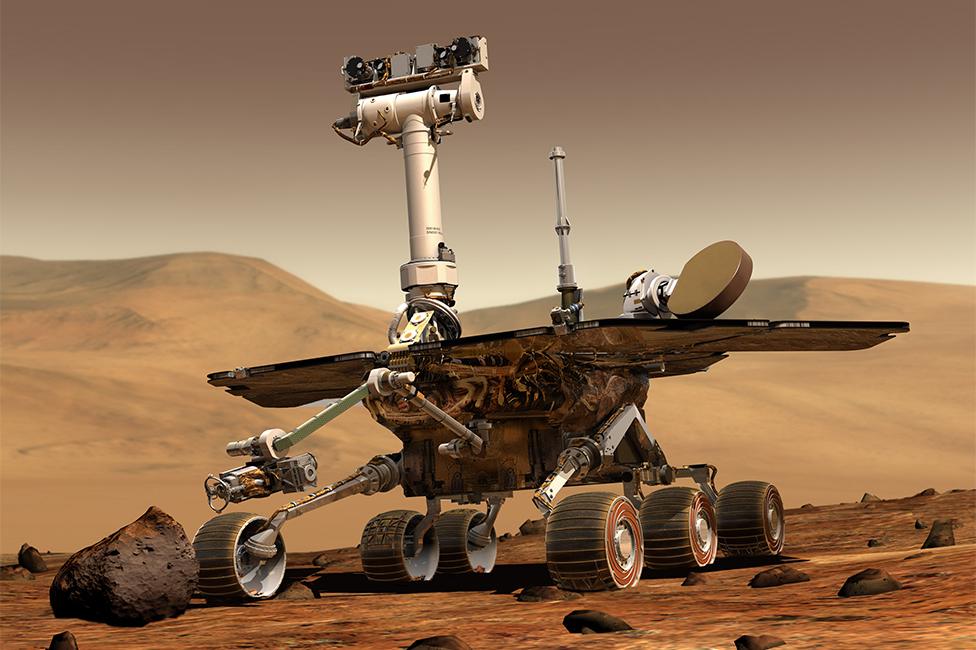
Artwork: The rovers lived far longer than anyone expected
What are the legacies?
One is an inspirational effect, says Abigail Fraeman, the deputy project scientist on the rover mission.
She was actually a high-school pupil when the robot landed and attended mission control on the day of touchdown, having won a competition.
"There really are hundreds, if not thousands, of students, who were just like me, who witnessed these rovers, and followed their missions with the images they released to the public over the last 15 years - and because of that went on to pursue careers in science, education and math(s)."
Another key legacy is the engineering, believes systems engineer Jennifer Trosper. Opportunity and Spirit showed how it was possible to build bigger and more capable machines to explore Mars. The previous landers, even ones with some mobility, were very restricted in what they could do.
"We weren't able to get to the things that we saw in the distance," she said.
"We saw mountains, we saw rocks, we saw stuff that our geologists wanted to get their hands on and we couldn't get there.
"So, one of the great paradigm shifts of Spirit and Opportunity was that we took everything that we needed, we put it on wheels and we made a geologist that could go and investigate the things that the science team was interested in."
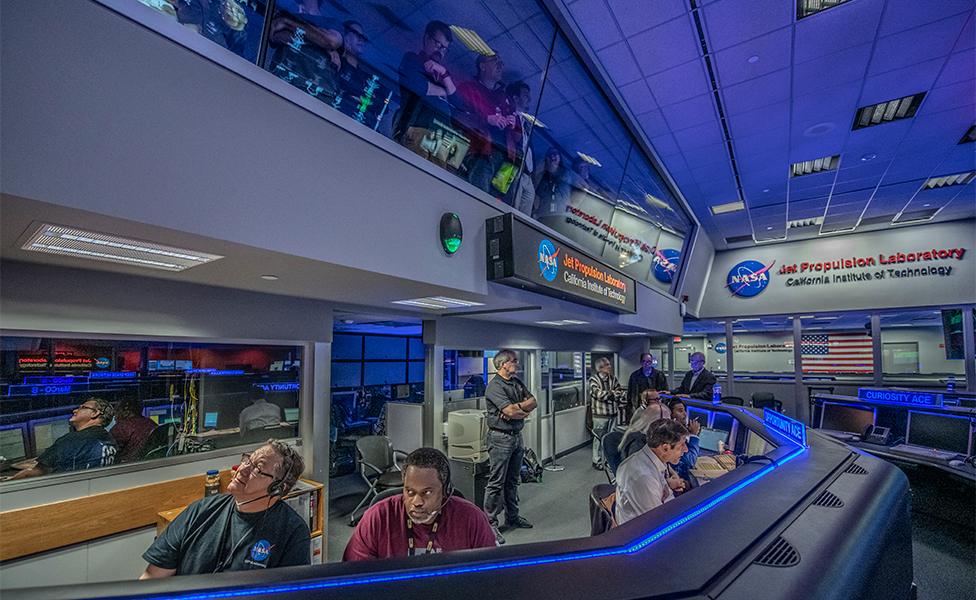
Engineers made a last communication attempt on Tuesday
What's left working on Mars now?
Opportunity's silence leaves just the one working rover on Mars.
The Curiosity robot landed in 2012 in Gale Crater. It has a plutonium battery and so was able to ride out the darkness of the recent dust storm with ease.
Nasa is currently preparing a near-twin of Curiosity, which will be delivered to the planet in February 2021. It will be joined on the surface a month later by Europe's Rosalind Franklin rover, although at a very different location.
The US space agency currently also operates a static lander, called InSight, which touched down in November last year.
Jonathan.Amos-INTERNET@bbc.co.uk, external and follow me on Twitter: @BBCAmos, external